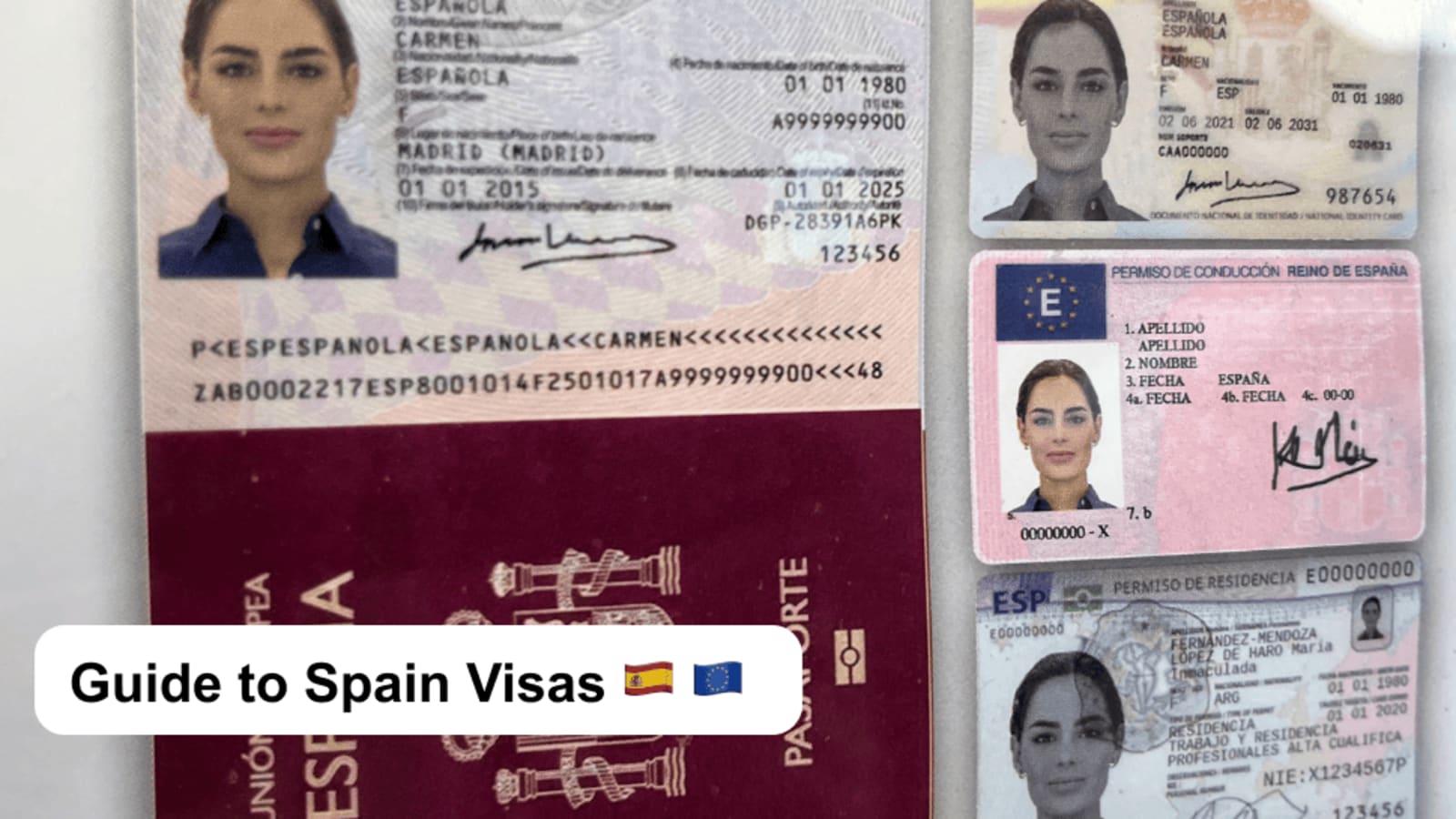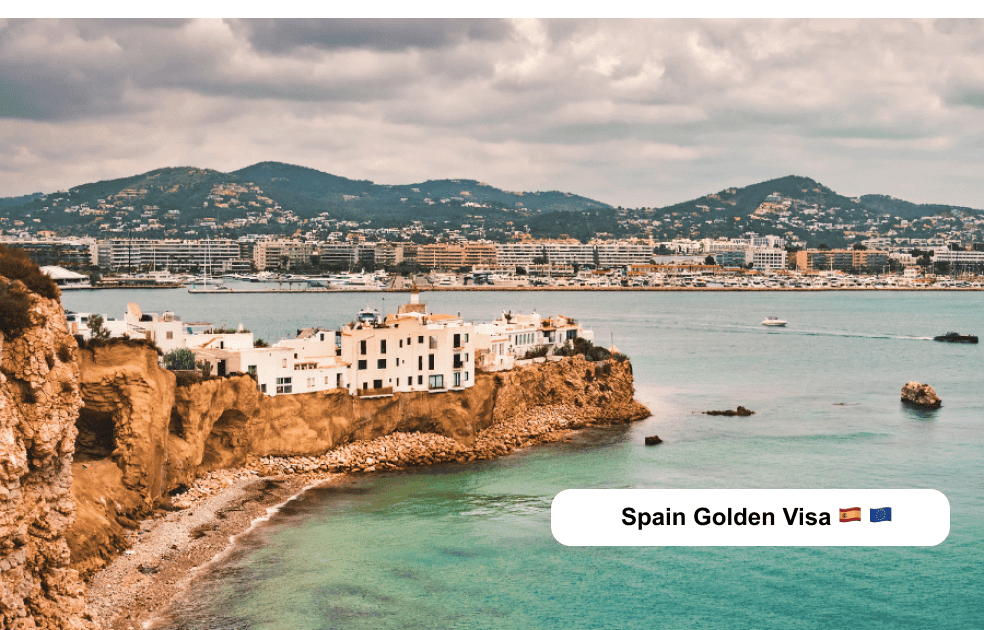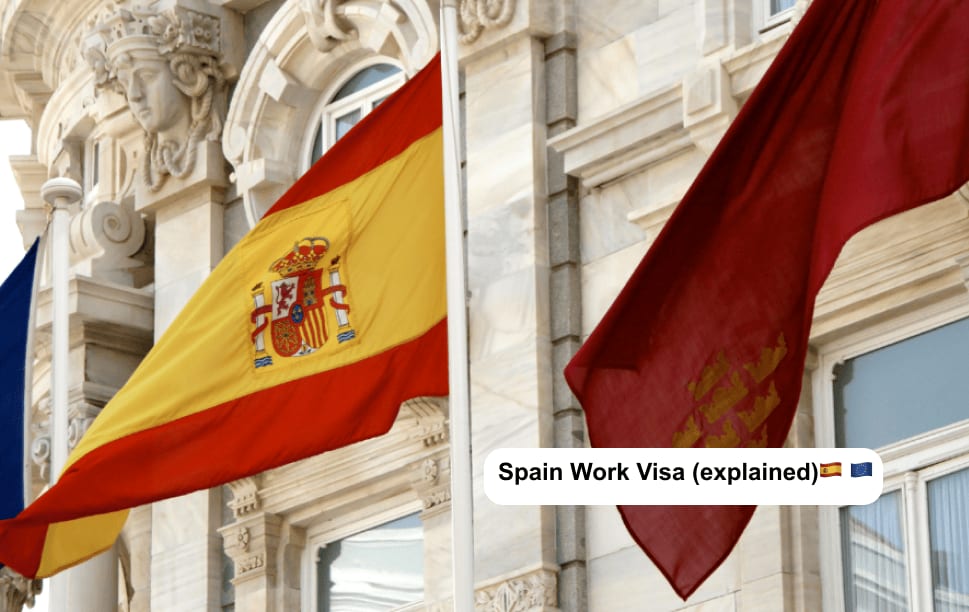Spain Visas 2023: Requirements & Tips by a Lawyer
May 23, 2023
Win a FREE Trip to Spain!
Exciting Announcement! For the first time, we're thrilled to offer exclusive trips to the heart of Spain - an experience like no other. This isn't your typical tourist journey; it's a unique opportunity to immerse yourself in authentic Spanish culture, alongside real locals and our passionate team.
But there's more! Simply by requesting information about this amazing trip, you'll be entered into a special draw to win a Fully Paid Trip to Spain for Two. And that's not all - everyone who inquires will receive an exclusive bonus gift, valued at $500, available only now.
Ready to Discover the Real Spain?Click Here ↑ to Request Information & Enter the Draw!
There are several types of visas to enter Spain, and you need to be very well aware of all of them to apply correctly and avoid misunderstandings.
If you are planning to study, travel, start a business, or live in Spain, there is, for sure, a specific visa for your situation.
In this article, I will list the six most sought Spain visas, plus the new ETIAS regulations developed by the European Union to have better control of the borders.
So, check if the one you need is on the list and if not, I will leave the contact to a lawyer buffet I have worked with and used their services for over a year.
Table of Contents ▼ ▶
General information on visas in Spain
These may sound obvious to some people, but once you get a visa for Spain of them, you can travel within ALL the Schengen area. Living and studying in Spain is one perk; you can access many other stunning countries.
But let us dive into the general things you should do before applying for any Spain visa.
So, all visas in Spain will require you to present the following documents, always with the original and copy. Plus, if your native language isn’t Spanish, all applicants are asked to legalize or apostille the papers and hand in the official translations.
The main documents are:
- Valid passport
- Recent passport-size photographs
- Full health insurance
- clean criminal record from the past five years
Where can you apply for your Spain visa?
When issuing a Spain visa, you can either go to BLS International or the Spanish Consulate; it will depend on what you have available in your country.
BLS International
BlS International is an official agency that issues Schengen travel visas for Spain. BLS is not available in all countries. You can check the list below, but if it is, it is your place to issue the Schengen- travel visa.
For example, Ecuadorian citizens have both BLS International and the Spanish Consulate available. However, people know that if they want to travel, they will have to apply at BLS; for any other application, like the student visa, they must apply through the consulate.
You should also go to the BLS Internation if you are studying for less than 90 days in Spain.
👉Find your BLS International agency
👉Find Spanish Consulates around the world
Also, it’s important to know that there are visas you can apply for from your home country and inside Spain.
If you are issuing a visa for the first time, you must do it from your home country.
However, once you get a visa and live, work, or study in Spain, you can change the type of visa (if applicable) to your situation. Always ask a lawyer or the Immigration Office before making any sudden change!
For example, the Schengen travel visa allows you to change to a student and entrepreneur permit inside of Spain without returning to your country.
Foreign Identity Card (TIE)
The TIE or foreign identity card is a common process that most people must do when they plan to stay in Spain for more than 180 days. So whether you are a student, a retiree, or just a digital nomad, if you plan to live in Spain for more than six months, you need to issue your TIE cards.
You have to do this process within the first 90 days in the country, and the documents to present are pretty much the same as the ones you needed to show when you applied for your visa.
Collect your papers and request an appointment as soon as possible. Getting your TIE can last 3 to 4 months, so it is best to start early.
Types of Visas in Spain
Visas for non-EU Nationals
1. Spain Golden Visa
Let us begin with the Spain Golden Visa. Most articles on the internet say that this is the easiest visa of all because the documents are not processed by the immigration office but by the UGE or Large Companies and Strategic Groups Unit. On top of that, it benefits from a fast-track waiting period that makes the decision-making shorter.
Is the Spain Golden visa for you?
The Spain Golden Visa’s main objective is to attract foreign investors to the country, and that is why the application is not evaluated by the Immigration Police but by the Units of Larges companies and Strategic Groups.
There are four types of golden visas that foreign investors can aim to:
- Invest 2 million euros in public debt.
- Invest 1 million euros in bank deposits or company shares.
- Invest in a business project that will be developed on Spanish territory. The requirements for this option are that the business will generate employment, implying a boost to the scientific/technological advance of the country, or translate into a minimum socioeconomic impact.
- Purchase real estate property for more than € 500,000.
If you want to have a Spanish residency and possess the resources to make a significant investment, consider one of the options above.
You should know that buying a real state property is the most important and sought-after investment.
Is it possible to say that buying a real estate property is the “easiest” compared to other millionaire investments? But everything comes with a catch!
If you decide to buy a real estate property to apply for the Spain Golden Visa, then know that the first 50,000 EUR you must give it cash. If your one or multiple properties are worth, let’s say, 600,000 EUR, you can pay the following 100,000 EUR with debt.
After you have acquired your property and collected all the necessary documents, you can apply for your visa at your respective Spanish Consulate if outside of Spain, and if you are inside the country, then you need to apply electronically through the UGE website
Additionally, another perk of the Golden Visa in Spain, you will enjoy a 15-day fast-track response period, and there is no minimum time you need to spend in Spain.
If this is the visa that you need, then check all the requirements and necessary documents before you apply:
2. Spain Non-lucrative visa
The Spain non-lucrative visa is a residence meant for non-EU nationals who wish to live and travel in Spain for a year.
Unlike the Spain golden visa, for the non-lucrative permit, you don’t need to invest in anything, but you will have to prove you have sufficient funds to live in Spain without working for 12 months.
An essential requirement for this visa is a bank account with a minimum of 2,400 EUR monthly. This means your account should have at least 28,800 EUR for your year in Spain.
The previous numbers represent 400% more of the established Spanish IPREM.
Once you prove you have the money and other papers, you must apply for a non-lucrative visa from your home country. Once in Spain, you have to get a TIE card.
If you are not retired and are of working age, you must present a notarized document with your compromise to refrain from doing any economic activity while staying in Spain.
If this is the visa that you need, then check all the requirements and necessary documents before you apply:
Non-lucrative Visa Spain 2023: Requirements & Tips by a Lawyer
3. Spain Schengen- travel visa
The Spain Schengen- travel visa is a permit meant for non-EU nationals and countries with no exempt visa agreement with Spain wishing to travel to Spain for less than 90 days.
What do I mean by “no exempt visa agreement with Spain”?
Many countries benefit from a visa-exempt with the European Union, allowing them to enter the EU for 90 days without a visa. However, this rule will change in 2024, when the EU puts into effect the ETIAS permit.
You will learn more about the ETIAS permit in a bit.
The Schengen visa can be issued at BLS International, an official agency that acts on behalf of Spain, or at your respective Spanish Consulate.
The consulate will issue the travel Schengen visa in three possible ways:
- Single-entry Schengen visa (indicated as “1” on the visa sticker) travelers can only enter the Schengen area once. It becomes invalid when the traveler enters the Schengen area, even if the permit expires.
- Ddouble-entry Schengen visa (indicated as “2” on the visa sticker), the validity period permits twice entry into the Schengen area. You may exit and re-enter the Schengen area within the visa’s time limit, so after the second exit, the visa becomes invalid.
- A multiple-entry Schengen visa (indicated as “MULT” on the visa sticker) allows its holder to enter and exit the Schengen area multiple times within a maximum of 90 days, every 180 days.
To learn more about the specifics of the travel visa in Spain, read our featured article, and avoid committing mistakes:
4. Spain Work visa
The employee visa or work visa in Spain is work authorization for non-EU nationals that have received a contract offer from a Spanish company or wish to start their entrepreneurial project in Spain.
It is important to know that there are two types of work visa authorization:
- “Contrato por cuenta ajena” or employee contract
- “Contrato por cuenta propia” or self-employed contract
Both applications demand similar documentation for some exceptions related to the nature of your future job. For example, if you plan to go for a self-employed contract, then you have to present a viable business plan with the respective financial sources to fund it.
If you check our article below, you will find more specific information on what requirements you need to meet and what documents you should have to apply correctly.
5. Spain Digital Nomad visa
The Spain Digital Nomad visa is a residency authorization for all non-EU nationals who wish to live in Spain while working remotely.
Pay close attention because this visa is not meant for people working remotely for a Spanish company; the digital nomad visa is for those working for foreign companies and wishing to experience the Spanish lifestyle for a year.
In other words, 80% of your income should come from a foreign business and a small percentage from Spanish clients or employers.
Like a non-lucrative visa, as a digital nomad visa applicant, you must prove you have enough financial resources to live in Spain for a year. If you have an income equal to or superior to €2,334 per month, you have the financial requirement to be a digital nomad.
To learn more about the specifics of the digital nomad visa in Spain, read our featured article, and avoid committing mistakes:
Digital Nomad Visa Spain 2023: Requirements & Tips by a Lawyer
6. Spain Student visa
The Spain student visa is a permit to live in Spain while completing an educational program. Once again, this visa is for non-EU nationals who wish to complete a course, bachelor’s, master or Ph.D. in Spain.
The Spain student visa is given to people who will study in the country for more than 90 days; if your studies are superior to a year, then know that you will have renewed your TIE annually until you finalize your studies.
It is important to know that the Spain student visa IS NOT a residence, and the years you spend studying in the country do not count for a future residence.
To have more specific information on the student visa in Spain, check out our article:
Visa-exempt nationals
7. ETIAS
ETIAS, or European Travel Information and Authorization System, is an authorization travel system that the European Union will implement on visa-exempt nationals to have better control over the borders.
These are the visa-exempt countries
| Country | Schengen visa agreement |
|---|---|
| Albania | Visa-free travel |
| Andorra | Visa-free travel |
| Antigua y Barbuda | Visa-free travel |
| Argentina | Visa-free travel |
| Australia | Visa-free travel |
| Bahamas | Visa-free travel |
| Barbados | Visa-free travel |
| Bosnia y Herzegovina | Visa-free travel |
| Brasil | Visa-free travel |
| Brunei | Visa-free travel |
| Canadá | Visa-free travel |
| Chile | Visa-free travel |
| Colombia | Visa-free travel |
| Corea del Sur | Visa-free travel |
| Costa Rica | Visa-free travel |
| Dominica | Visa-free travel |
| El Salvador | Visa-free travel |
| Emiratos Árabes Unidos | Visa-free travel |
| Estados Unidos | Visa-free travel |
| Georgia | Visa-free travel |
| Granada | Visa-free travel |
| Guatemala | Visa-free travel |
| Honduras | Visa-free travel |
| Hong Kong | Visa-free travel |
| Islas Marshall | Visa-free travel |
| Islas Salomón | Visa-free travel |
| Israel | Visa-free travel |
| Japón | Visa-free travel |
| Kiribati | Visa-free travel |
| Macao | Visa-free travel |
| Macedonia del Norte | Visa-free travel |
| Malasia | Visa-free travel |
| Mauricio | Visa-free travel |
| México | Visa-free travel |
| Micronesia | Visa-free travel |
| Moldova | Visa-free travel |
| Montenegro | Visa-free travel |
| Nueva Zelanda | Visa-free travel |
| Nicaragua | Visa-free travel |
| Palau | Visa-free travel |
| Panamá | Visa-free travel |
| Paraguay | Visa-free travel |
| Perú | Visa-free travel |
| Reino Unido | Visa-free travel |
| San Cristóbal y Nieves | Visa-free travel |
| Santa Lucía | Visa-free travel |
| San Vincente | Visa-free travel |
| Samoa | Visa-free travel |
| Serbia | Visa-free travel |
| Seychelles | Visa-free travel |
| Singapur | Visa-free travel |
| Taiwan | Visa-free travel |
| Timor Leste | Visa-free travel |
| Tonga | Visa-free travel |
| Trinidad y Tobago | Visa-free travel |
| Tuvalu | Visa-free travel |
| Ucrania | Visa-free travel |
| Uruguay | Visa-free travel |
| Vanuatu | Visa-free travel |
| Venezuela | Visa-free travel |
As its name indicates, ETIAS is not a visa but a travel authorization that will become effective in 2024.
ETIAS consists of an electronic form in which people with the visa-exempt policy need to notify their future travel plans and request entry authorization.
By registering where visitors will travel and what borders they will cross, the EU will have better control over who crosses to which country.
Unlike the Schengen visa, ETIAS is more affordable and faster to process. On top of that, the electronic permit lasts for three years.
Note: If your passport expires three years of the expiration date of the ETIAS, you will have to issue another permit.
If this is the visa that you need, then check all the requirements and necessary documents before you apply:
Now you have it! A guide with the seven most solicited visas to travel, work, and live in Spain.
In each article linked in this guide, you will find tips and the contact to a trusted lawyer’s office that can guide you through the processes.












